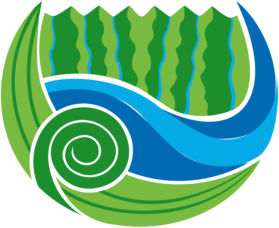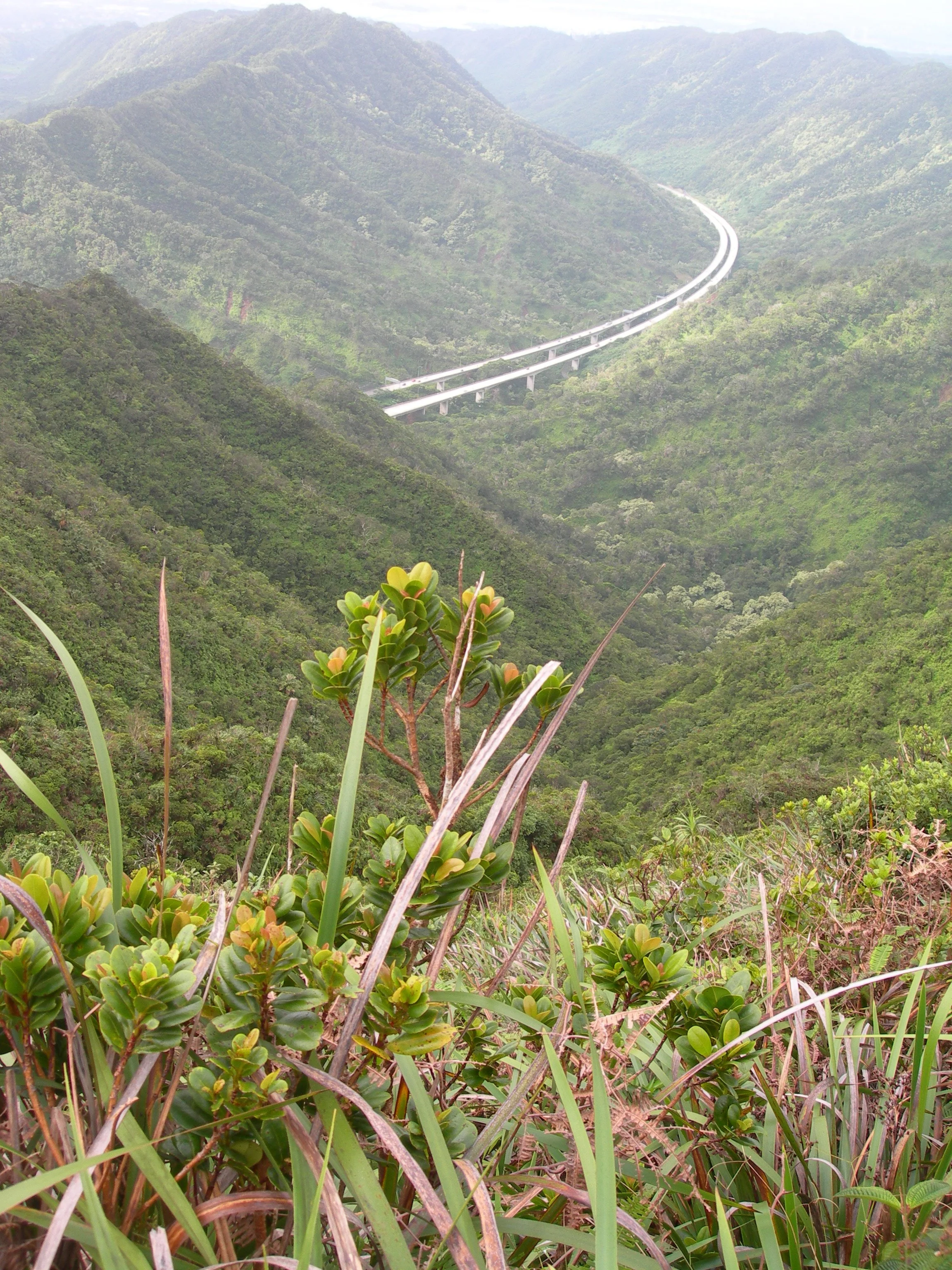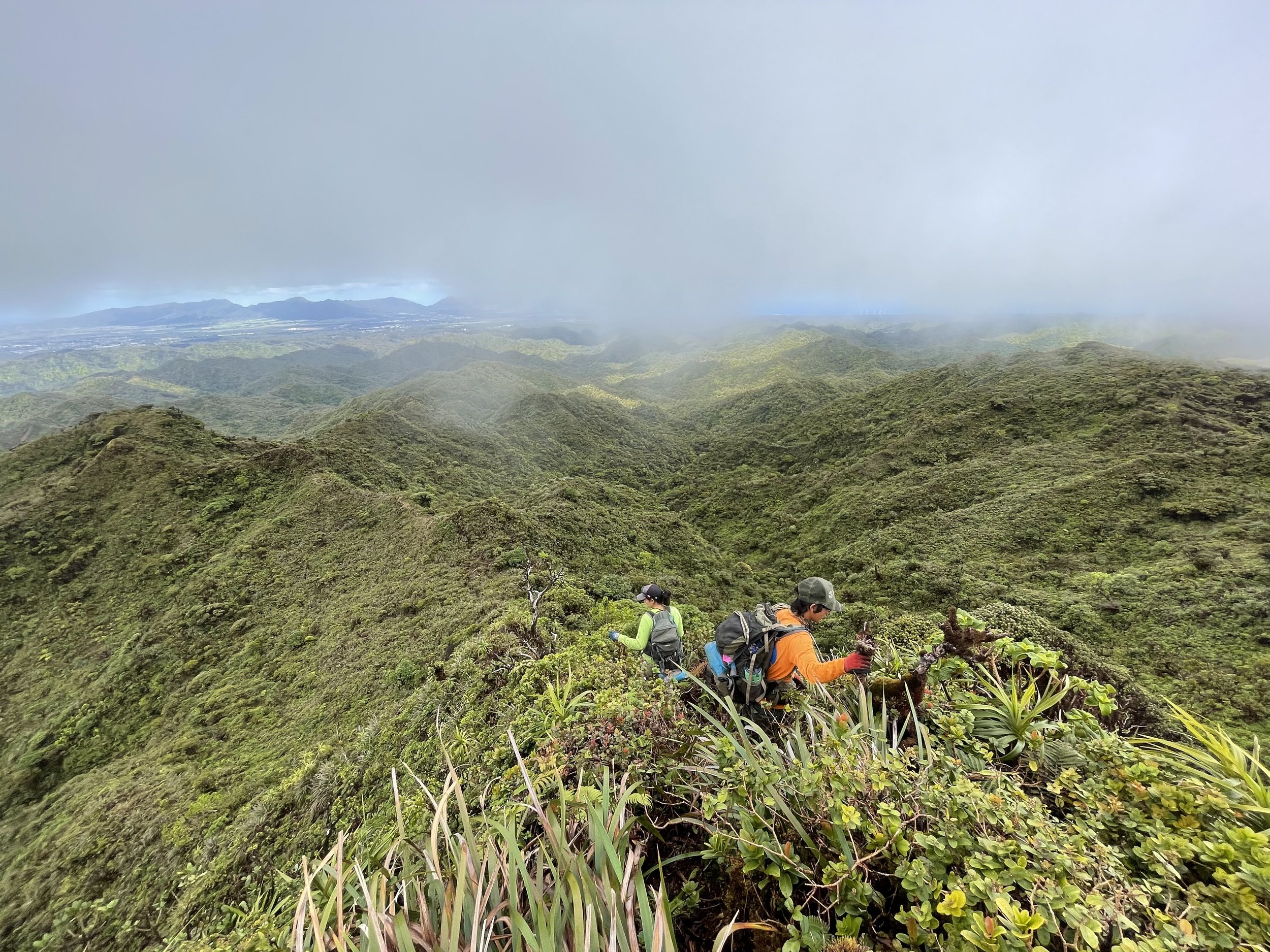
Management AreasThe Koʻolau Mountains contain some of the most important and productive watershed forests on Oʻahu.
In addition to sustaining our supply of fresh water, a healthy functioning watershed forest performs valuable services to ecosystems including:
Retaining soils and nutrients.
Slowing erosion rates.
Preventing flooding in lowland areas.
Maintaining water quality in streams.
Reducing the sedimentation and pollution of nearshore reef environments.
Providing important habitat for other native species.
KMWP 2024 Management Map
Click on an outline to learn more about a Management Area. The arrows in the top-left corner will display a legend that lists the names of all Management Areas.
Featured Management Areas
-
Hālawa
Hālawa Valley, located in the south-central region of the Koʻolau, is bisected by the H-3 freeway corridor and Harano Tunnels connecting central Oʻahu to the east side. The valley contains an assortment of native species including koa (Acacia koa), ʻōhiʻa (Metrosideros polymorpha), ʻiliahi (Santalum spp.), mamaki (Pipturus albidus) and hala pepe (Chrysodracon halapepe), but has been heavily invaded by invasives. With support from our Honolulu Board of Water Supply partners, KMWP has begun working across 170 acres of the valley to survey and control target weeds such as albizia (Falcatariamoluccana), Australian tree fern (Spaeropteris cooperi), gunpowder tree (Trema orientalis), and giant fern (Angiopteris evecta).
-
Helemano
Helemano adjoins the Poamoho section of the ʻEwa Forest Reserve in the northern Koʻolau. This region is divided into two management units with protective fences. The Northern Helemano fenced unit is complete, while the Southern Helemano unit waits funding to enclose its southern boundary. KMWP’s work in these areas has primarily focused on controlling the highly-invasive manuka (Leptospermum scoparium) plant. This multi-year project has successfully controlled the majority of mature trees within the Helemano units. In addition, KMWP is partnering with the Oʻahu Invasive Species Committee and DLNR’s Native Ecosystem Protection and Management staff to prevent the spread of cane tibouchina (Tibouchina herbacea).
-
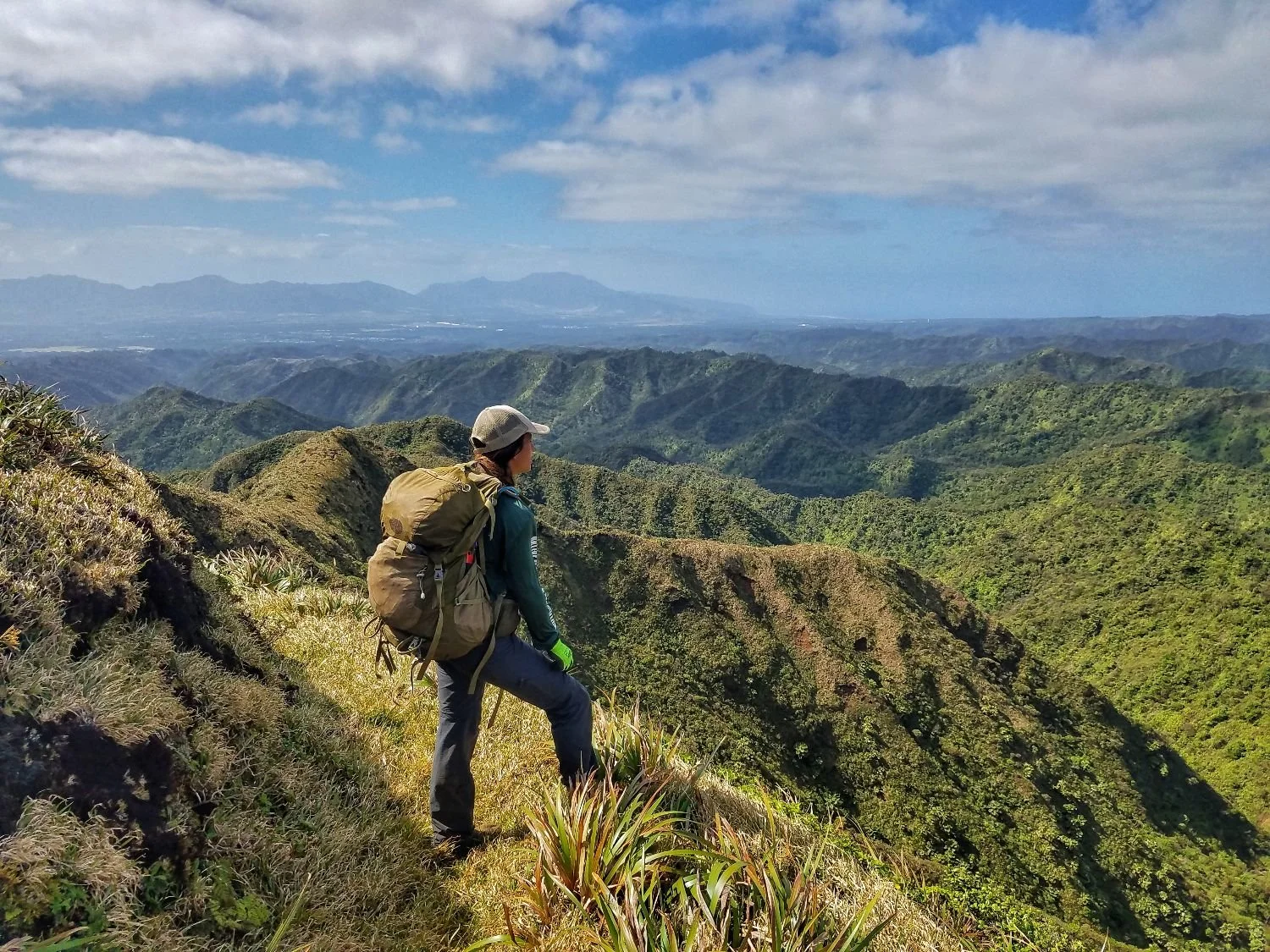
Kīpapa (OFNWR)
The Oʻahu Forest National Wildlife Refuge is managed by the U.S. Fish and Wildlife Service (FWS). Because the unit is very large, spanning almost 4,700 acres from the summit of the Koʻolau Mountains to Mililani Mauka, KMWP partners with FWS staff to focus on the invasive plants that pose the greatest threat to the most intact native habitat. Top weed targets in Kīpapa are Himalayan ginger (Hedychium gardernianum), albizia (Falcataria moluccana), and manuka (Leptospermum scoparium) which is spreading into native forest along the eastern boundary of the refuge. KMWP has also been assisting FWS with native forest recovery efforts by preventing the spread of weeds in the ~400 acre area of the refuge that burned in a fire in January 2015.
-
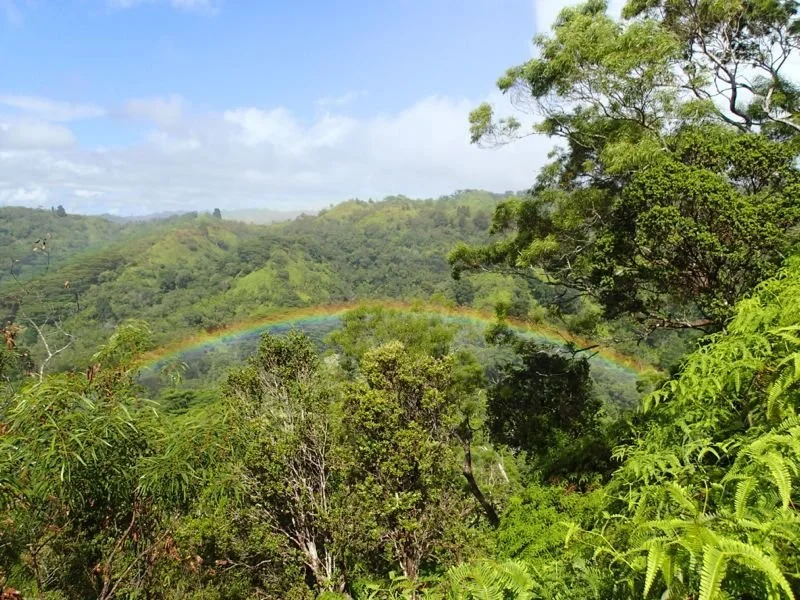
Mānana
KMWP performs work in several areas of Mānana. In the “upper” Mānana region, KMWP is eliminating manuka (Leptospermum scoparium), mule’s foot fern (Angiopteris evecta), and other priority weeds from a 40 acre area just below the windswept Koʻolau summit. Weeds blown in from the windward side have begun to encroach on this area, threatening the integrity of this highly native ecosystem. This work was made possible with support from a grant given by the USDA National Resource Conservation Service. In the lower region KMWP is working along the Mānana Trail to remove thick stands of the fire-prone paperbark tree (Melaleuca quinquenervia) from a large slope near the Boy Scout shelter. Volunteers have outplanted koa seedlings in a previously cleared area at the top of this slope, along with the Hoʻoholo outplant site, located closer to the trailhead.
-

Poamoho
KMWP works throughout the upper elevations of the Poamoho section of the ʻEwa Forest Reserve. Two protective fences (Northern and Southern) have been constructed in Poamoho to preserve the important native-dominated forests and shrublands. KMWP and DLNR’s Native Ecosystems Protection and Management staff are working together to control the habitat-modifying giant fern (Angiopteris evecta) across Poamoho’s mauka landscape. KMWP continues to monitor the area for feral pig presence though none have been detected since 2016.
-

Waiʻalae Nui
Waiʻalae Nui is located in the southeastern Koʻolau Mountains, with Mauʻumae Trail running along its western boundary. The forest at Waiʻalae Nui is largely intact from the mid elevations to the summit and is dominated by koa (Acacia koa), ʻōhiʻa (Metrosideros polymorpha) and uluhe (Dicronopteris linearis), a common but important fern that helps shield steep slopes from erosion. The native forest communities at Waiʻalae Nui are threatened by the encroachment of several highly invasive plants which have become established in both the lower elevations and on the windward cliffs. KMWP partners with the landowner, (Kamehameha Schools), to control these threats.
-

Waiawa
The Waiawa region in the central Koʻolaus is home to some of the most important watershed forests on the island of Oʻahu. KMWP partners with the landowners (Kamehameha Schools and the State of Hawaiʻi) to control invasive plants on the leeward slopes of the Koʻolau summit, where the vegetation is composed of diverse low-stature native shrublands. Target weeds at Waiawa include albizia (Falcataria moluccana), manuka (Leptospermum scoparium), giant fern (Angiopteris evecta) and octopus tree (Schefflera actinophylla). In 2017, with support from the state, Honolulu Board of Water Supply, and Coca-Cola’s Replenish program, KMWP initiated the process to protect 1,345 acres of Waiawa watershed forest from damage by feral pigs through the installation of ungulate-proof fencing.
Join Our Mailing List & Stay Connected
Sign up to be the first to receive our newsletter, volunteer opportunities, job openings, and updates.
